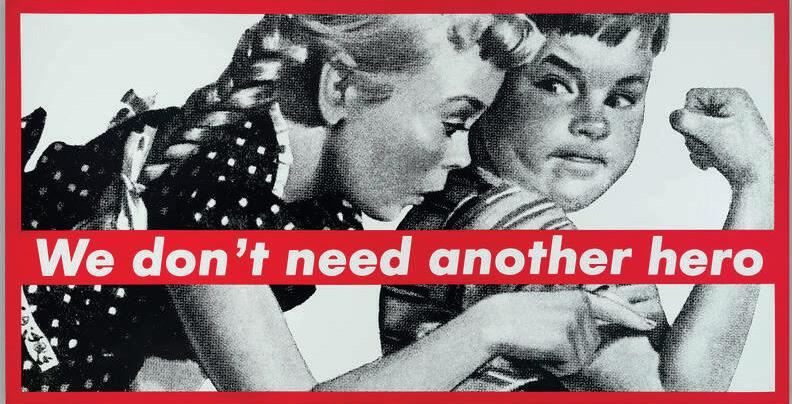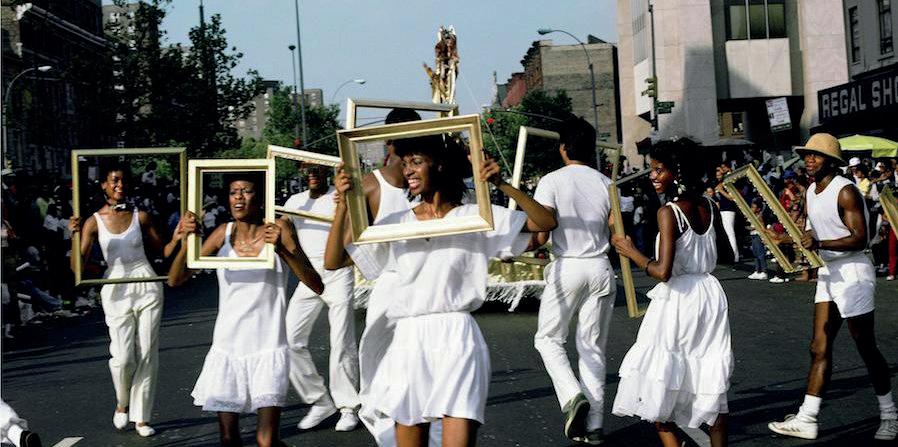
2 minute read
S
By Makayla Binter
Artists are documenters of the human experience, sharing thoughts and experiences that may be lost to history books and twisted narratives. We pass on messages in many mediums to clarify and uplift human change and culture.
The decades and iterations of the women’s empowerment movement include many powerful women; Frida Kahlo, Marina Abramovic, Judy Chicago, and Barbara Krueger (to name a few). Their work expresses women’s power by sharing their truths, such as making fun of the media’s tendency to minimize women, as seen in Krueger’s We Don’t Need Another Hero, 1984.
Mimicking the iconic poster of Rosie the Riveter, which was used in World War II to get women involved in shipyards and factories, a child flexes as a young girl points at their bicep. You can see the flexing child’s strained face while their friend seems almost shocked or judgemental at the motion.
The words “We don’t need another hero” say exactly what they mean - women can do and be who they need to be for themselves. Krueger’s choice of a poster adds a narrative as posters are easily consumed and have a fleeting chance of catching the attention of those reading them. And the following sentence, “Printed on paper, they can be pinned up but easily torn down or disintegrated.” Krueger’s work became the cover of magazines and was published across the country.
So, even if you were not actively looking for her work, you saw it. She made easily consumable work with quick phrases that could be recalled and had several layers to them, which we call sticky in the art community.

The imagery. The words. The message. They stick.
In the case of Judy Chicago’s The Dinner Party Chicago built a large, triangle-shaped dinner table with plates for influential women and threw away the concept of “roundtable talk.” Not only were women not perceived to be at the theoretical table, but Chicago just built her own.

She devalued the table of decisions, of the patriarchy, the rule makers, and filled her table with women that changed the experience for all.
These pieces are highlighted to emphasize a women’s perspective. From social hierarchies to historical standards, there was and continues to be an ideology surrounding women’s capability. Artists can take those expectations and their experience of maintaining or breaking them to make thought-provoking pieces of work and ultimately connect with a broader audience.

Today, we have texts and literature that discuss the intersectionality of an individual experience. This is the layers of a person’s identity- their race, sexuality, age, ability, gender orientation- and how that impacts their ability to exist. This fact is critical in depicting the women’s empowerment movement because it emphasizes the impact of black, brown, queer, and trans womxn that have participated and changed women’s rights for all.
From fashion to language arts to photography, the arts are an opportunity to dive into the many layers within a single person and get an idea of how several systems of oppression impact those identities. From the construction, execution, or production of a piece, consumers can see the levels of individuality in every work of art. In the case of Lorraine O’Grady, she captured the black joy in all of its forms by walking through Harlem in 1983 with gold frames.
Just from the photograph alone, you can see different skin tones and expressions of Blackness. Each person with a gold frame is their work of art. But, this frame encourages us to look at the entire person in the frame. Viewers can bring all of these notes together and see the multi-level observations about each person in the frame by looking at the play of foreground, middle ground, and background, hair texture and style, clothing, and frame style.
Arts in the women’s empowerment movement, and any social change, are used to study the grassroots experience. The authenticity and honesty of these works and the people that showcase them need to reflect various perspectives and experiences. Representation in storytelling broadens our views, sticking out from the predominant narrative that excludes and minimizes the human experience.









